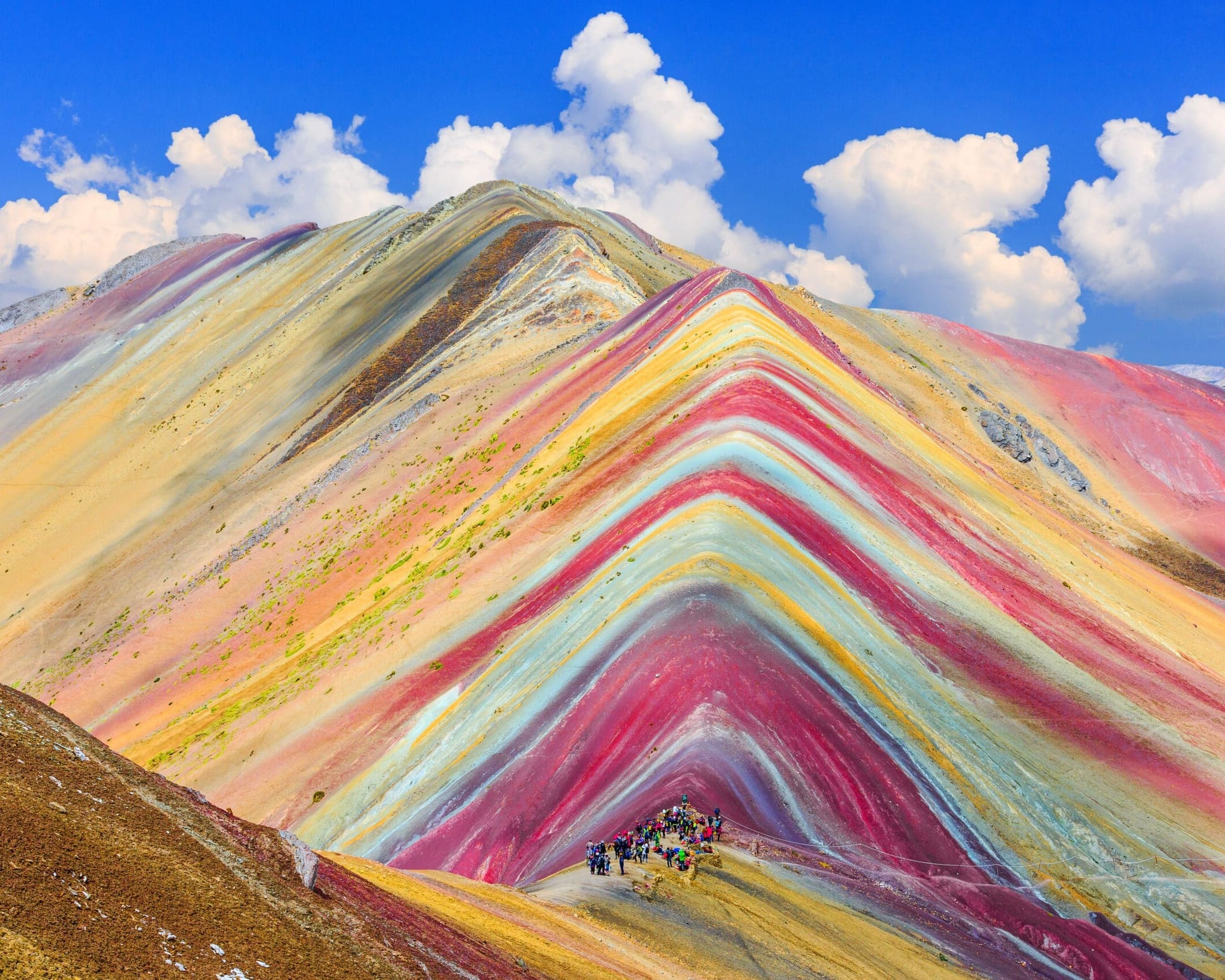Step into Peru, a land where ancient ruins whisper the secrets of the past, vibrant markets burst with color and life, and majestic landscapes stretch as far as the eye can see.
This is a country where every corner holds a story, every dish a celebration of flavor, and every sunset a promise of another day of adventure. From the awe-inspiring heights of Machu Picchu to the mysterious lines of Nazca, from the bustling streets of Lima to the serene beauty of Lake Titicaca, Peru is a country that beckons with the promise of discovery.
Here, history is not just found in textbooks but etched into the very landscape—Incan ruins, colonial churches, and pre-Columbian art offer a glimpse into a time where civilization flourished against the backdrop of the Andes.
But Peru’s wonders are not confined to its past; the country’s natural diversity, from the Amazon rainforest to the arid Pacific coast, provides endless opportunities for exploration and adventure.
As we guide you through the heart of South America, we’ll share insider tips on how to immerse yourself in Peru’s rich culture, navigate its varied terrains, and savor the culinary delights that make Peruvian cuisine a world treasure.
Whether you’re trekking ancient pathways, exploring vibrant cities, or simply soaking in the breathtaking views, Peru offers an experience that will touch your soul and leave you yearning for more.
Welcome to Peru, where adventure and history meet in the heart of the Andes. Your journey starts here.

The Best Time To Visit
The best time to visit Peru largely depends on the regions you plan to explore and the activities you have in mind. The country’s diverse geography means its climate varies significantly from coast to desert to rainforest. Here’s a general guide:
Dry Season (May to October): This is the ideal time for trekking and visiting the highlands, including Machu Picchu and Cusco, as the weather is generally sunny and dry, offering clear skies and the best conditions for hiking. It’s also the peak tourist season, so expect higher prices and more crowded attractions.
Wet Season (November to April): The Amazon rainforest is lush during these months, and although it’s the rainy season in the highlands, it’s less crowded, allowing for more tranquil visits to popular sites. In the Andean region, the rains bring the countryside to life, making it beautifully green. This season is perfect for those who prefer to avoid the crowds and don’t mind a bit of rain.
Coastal Region: If you’re interested in visiting the coast, including Lima, the summer months (December to March) are warm and sunny, ideal for enjoying the beaches. However, this is also when locals take their vacations, so coastal areas can get busy.
Overall, the best time to visit Peru for good weather and outdoor activities like hiking in the Andes is during the dry season, from May to October.
However, if you wish to explore the Amazon or enjoy the coastal areas with fewer tourists, the wet season or the Peruvian summer might be more to your liking.
What To Know
In Peru, the official languages are Spanish, which is the most widely spoken language across the country, and Quechua, an indigenous language that holds cultural significance, especially in the Andean regions.
English is commonly spoken in major tourist areas, hotels, and by tour guides, but less so outside these areas. Learning some basic Spanish phrases can greatly enhance your travel experience in Peru.
The currency used in Peru is the Peruvian Sol, abbreviated as PEN.
It’s always a good idea for travelers to have some local currency on hand, as while credit cards are widely accepted in major cities and tourist areas, cash is often preferred in smaller towns and rural areas.
In general, Peru is considered safe for tourists, but it’s important to take standard safety precautions and be aware of your surroundings.
In larger cities like Lima and Cusco, and in tourist areas, it’s wise to watch out for petty crime, such as pickpocketing or bag-snatching. Travelers are advised to keep valuables secure and out of sight, avoid walking alone at night in less-populated areas, and use reputable transportation options.
When visiting remote areas, especially in the Andes or the Amazon, it’s crucial to prepare adequately, be aware of altitude sickness, and have a reliable guide if venturing into wilderness areas or undertaking treks like the Inca Trail.
By staying informed, making smart choices, and respecting local laws and customs, most travelers have a safe and enjoyable experience in Peru.
Public transport in Peru is varied and caters to different needs, ranging from urban to rural transportation. In cities like Lima, the public transport system includes buses, minibuses (colectivos), and a metropolitan rapid transit system known as the Metropolitano. Lima also has a light rail system, the Lima Metro, which is expanding to better connect different parts of the city.
For intercity travel, buses are the main mode of transport, connecting major cities across the country. These range from basic to luxury services, offering various levels of comfort and amenities for longer journeys. Bus travel is affordable and routes cover most destinations, including remote areas not accessible by train or plane.
Peru has a few train lines offering scenic journeys, notably the train to Machu Picchu and the Andean Explorer, which travels from Cusco to Lake Titicaca. These are popular with tourists for the breathtaking views they offer.
In more remote areas, especially in the Amazon basin, riverboats serve as a crucial means of transport, connecting communities along the rivers.
